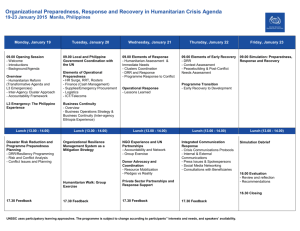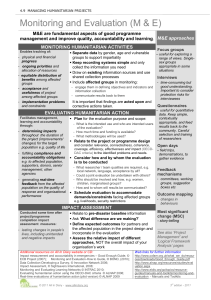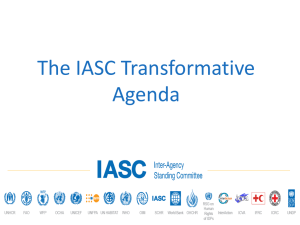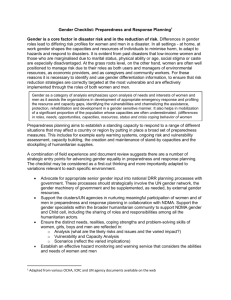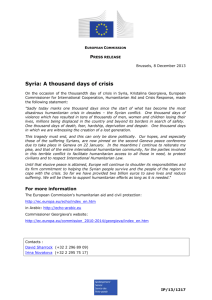CORE P2 WB 010 2_1.1.3b Chapter Sphere Core Standards
advertisement
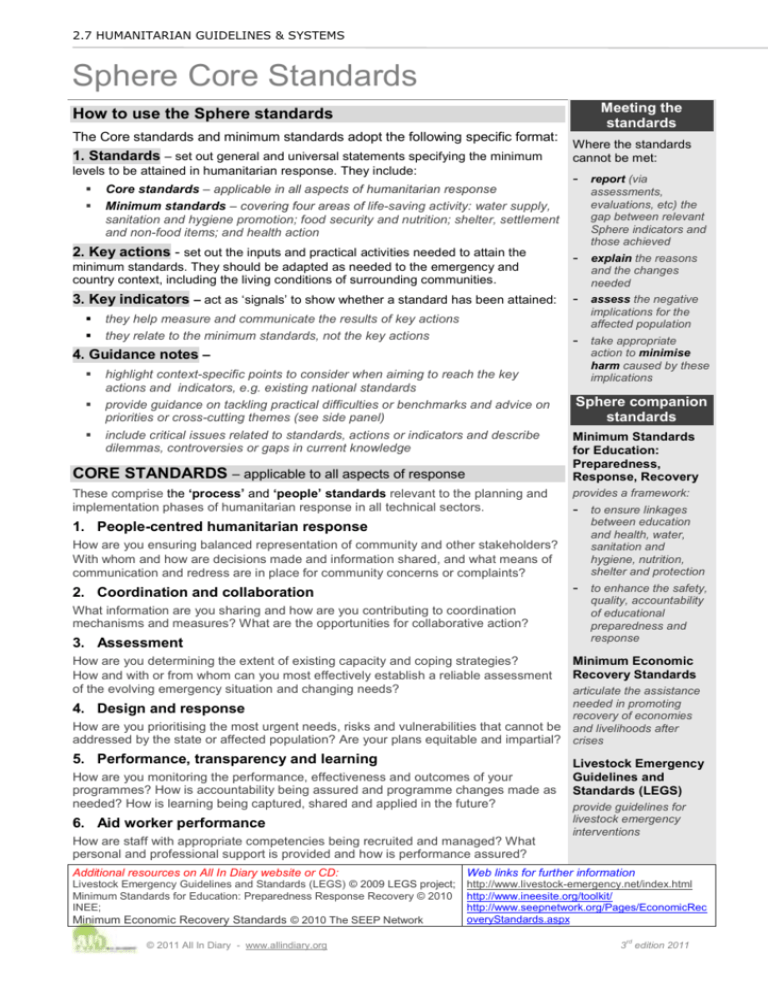
2.7 HUMANITARIAN GUIDELINES & SYSTEMS Sphere Core Standards Meeting the standards How to use the Sphere standards The Core standards and minimum standards adopt the following specific format: 1. Standards – set out general and universal statements specifying the minimum levels to be attained in humanitarian response. They include: Core standards – applicable in all aspects of humanitarian response Minimum standards – covering four areas of life-saving activity: water supply, sanitation and hygiene promotion; food security and nutrition; shelter, settlement and non-food items; and health action 2. Key actions - set out the inputs and practical activities needed to attain the minimum standards. They should be adapted as needed to the emergency and country context, including the living conditions of surrounding communities. 3. Key indicators – act as ‘signals’ to show whether a standard has been attained: they help measure and communicate the results of key actions they relate to the minimum standards, not the key actions Where the standards cannot be met: - report (via assessments, evaluations, etc) the gap between relevant Sphere indicators and those achieved - explain the reasons and the changes needed - assess the negative implications for the affected population take appropriate action to minimise harm caused by these implications - 4. Guidance notes – highlight context-specific points to consider when aiming to reach the key actions and indicators, e.g. existing national standards provide guidance on tackling practical difficulties or benchmarks and advice on priorities or cross-cutting themes (see side panel) include critical issues related to standards, actions or indicators and describe dilemmas, controversies or gaps in current knowledge CORE STANDARDS – applicable to all aspects of response These comprise the ‘process’ and ‘people’ standards relevant to the planning and implementation phases of humanitarian response in all technical sectors. Sphere companion standards Minimum Standards for Education: Preparedness, Response, Recovery How are you ensuring balanced representation of community and other stakeholders? With whom and how are decisions made and information shared, and what means of communication and redress are in place for community concerns or complaints? provides a framework: - to ensure linkages between education and health, water, sanitation and hygiene, nutrition, shelter and protection 2. Coordination and collaboration - 1. People-centred humanitarian response What information are you sharing and how are you contributing to coordination mechanisms and measures? What are the opportunities for collaborative action? 3. Assessment How are you determining the extent of existing capacity and coping strategies? How and with or from whom can you most effectively establish a reliable assessment of the evolving emergency situation and changing needs? to enhance the safety, quality, accountability of educational preparedness and response Minimum Economic Recovery Standards articulate the assistance needed in promoting recovery of economies How are you prioritising the most urgent needs, risks and vulnerabilities that cannot be and livelihoods after addressed by the state or affected population? Are your plans equitable and impartial? crises 4. Design and response 5. Performance, transparency and learning How are you monitoring the performance, effectiveness and outcomes of your programmes? How is accountability being assured and programme changes made as needed? How is learning being captured, shared and applied in the future? 6. Aid worker performance How are staff with appropriate competencies being recruited and managed? What personal and professional support is provided and how is performance assured? Livestock Emergency Guidelines and Standards (LEGS) provide guidelines for livestock emergency interventions Additional resources on All In Diary website or CD: Web links for further information Livestock Emergency Guidelines and Standards (LEGS) © 2009 LEGS project; Minimum Standards for Education: Preparedness Response Recovery © 2010 INEE; Minimum Economic Recovery Standards © 2010 The SEEP Network http://www.livestock-emergency.net/index.html http://www.ineesite.org/toolkit/ http://www.seepnetwork.org/Pages/EconomicRec overyStandards.aspx © 2011 All In Diary - www.allindiary.org 3rd edition 2011
